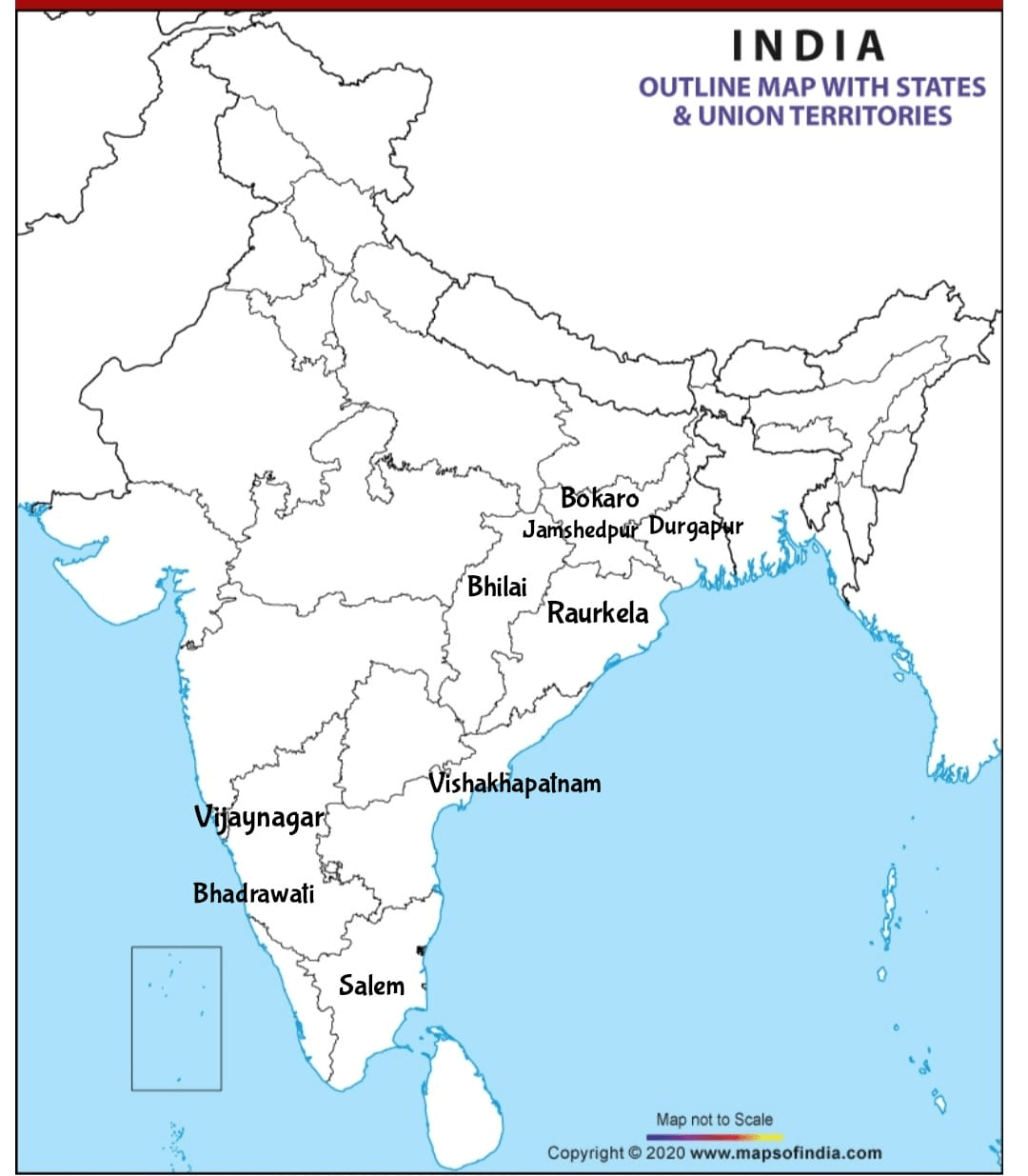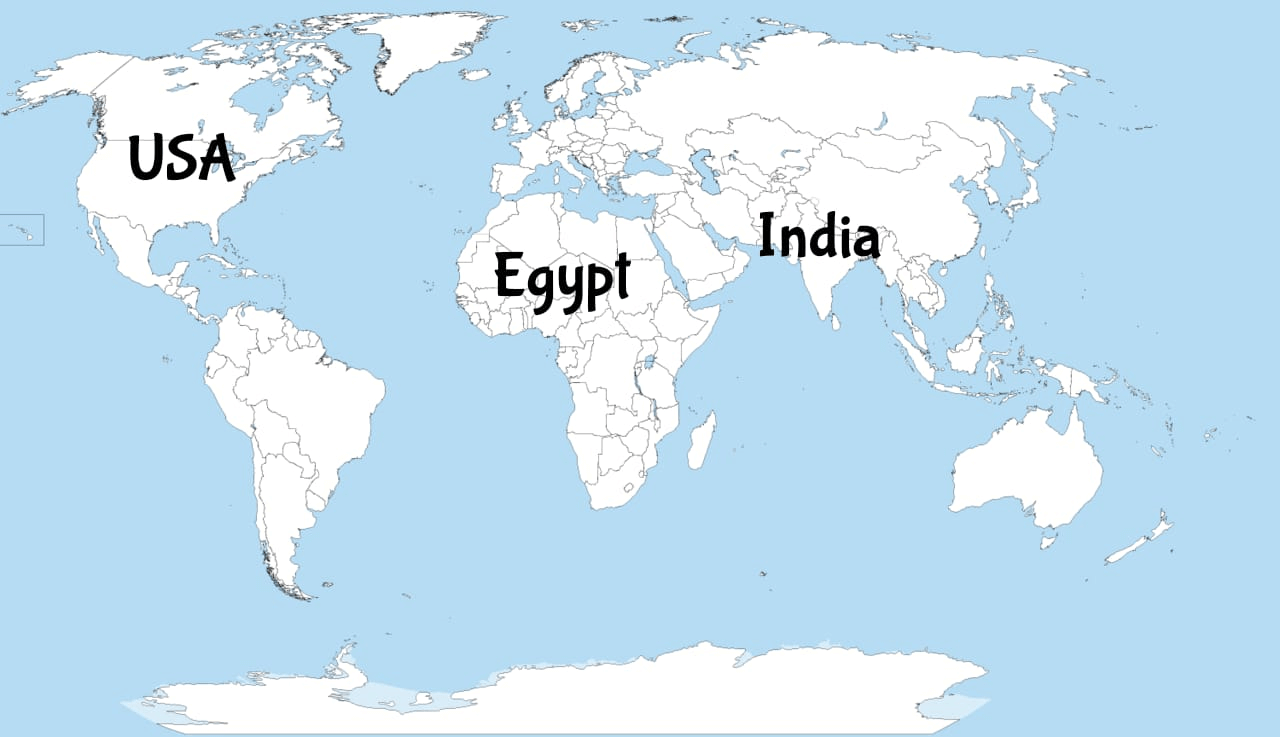Geography - Class 8
Resources and Development
Chapter 5: Industries
Question 1:Answer the following questions.
(i) What is meant by the term ‘industry’?
Answer:
. Industry refers to an economic activity that is concerned with production of goods, extraction of minerals or the provision of services. Thus, we have iron and steel industry (production of goods), coal mining industry (extraction of coal) and tourism industry (service provider).Which are the main factors which influence the location of an industry?
Answer:
. The factors affecting the location of industries are the availability of raw material, land, water, labour, power, capital, transport and market. Industries are situated where some or all of these factors are easily available.(iii) Which industry is often referred to as the backbone of modern industry and why?
Answer:
Steel industry is often referred to as the backbone of modern industry because steel is majorly used everywhere. Most of the things that we use in our daily life is made up of steel.(iv)Why cotton textile industry rapidly expanded in Mumbai?
Answer:
The warm, moist climate, a port for importing machinery, availability of raw material and skilled labour resulted in rapid expansion of the industry in the Mumbai region.Do you need help with your Homework? Are you preparing for Exams?
Study without Internet (Offline)
Question 2:Tick the correct answer.
(i) Fort Gloster is located in
(a) West Bengal
(b) California
(c) Gujarat
(ii) Which one of the following is a natural fibre?
(a) nylon
(b) jute
(c) acryclic
Answers :-
(i) (a) West Bengal
(ii) (b) jute
Question 3:Distinguish between the followings.
(i) Agro-based and mineral based industry
Answer :
| Agro based industry | mineral based industry |
|---|---|
| these industries uses plant and animal based products as their raw material | these industries heroes mineral ores as their raw materials |
| examples are food processing, vegetable oil, cotton textile, dairy products. | examples are steel and iron industries, heavy machinery industries. |
(ii) Public sector and joint sector industry
Answer :
| Public sector | joint sector industry |
|---|---|
| Industries owned and operated by the government are called public sector industries. | industries owned handle created by the state and individuals or a group of individuals are called joint sector industries. |
| examples are Steel authority of India limited. | examples are Maruti Udyog Limited. |
Question 4:Give two examples of the following in the space provided.
(i) Raw Materials: _____________ and _____________________
(ii) End product: _______________ and _________________________
(iii) Tertiary Activities: ________________ and __________
(iv) Agro-based Industries: ____________ and ____________
(v) Cottage Industries: ___________ and ________________
(vi) Co-operatives: ______________________ and _____________
Answers :
(i) Raw Materials: Iron and Cotton
(ii) End product: Utensils and cloth
(iii) Tertiary Activities: Transport and banking
(iv) Agro-based Industries: dairy industry and cotton textile industry
(v) Cottage Industries: pottery and basket weaving
(vi) Co-operatives: mother dairy and Amul.
Intext Questions :
Question :Trace the journey of your shirt from a cotton field to your wardrobe.
Answer :
During harvesting season, farmers pluck out cotton buds and separate raw cotton. The raw cotton is then spinned on a handloom or power loom. After spinning, cotton yarn is weaved to make finished cotton cloth. This cloth is used by tailors to make different garments and sold to retailers.Question :Give some examples of agro based industries.
Answer :
Cotton textile industry, jute industry, silk industry, sugar industry, synthetic textile industries.Question :Find out the inputs outputs and process involved in the manufacture of a leather shoe.
Answer :
Inputs : Raw material in the form of unprocessed leather, labor, machinery, an industrial unit.
Process : The process includes converting unprocessed leather called hide into tough leather, and then spinning and finally printing to give it a finished look.
Outputs : Finished leather is then turned into Leather shoes by shoemakers.
Question :With the help of an atlas identify some iron and steel industries in India and mark their location on an outline map of India.
Answer :

Question :On an outline map of the world mark the places which provide raw material to cotton textile industry of Osaka.
Answer :
For Osaka textile industry, cotton is imported from India, USA and Egypt.
